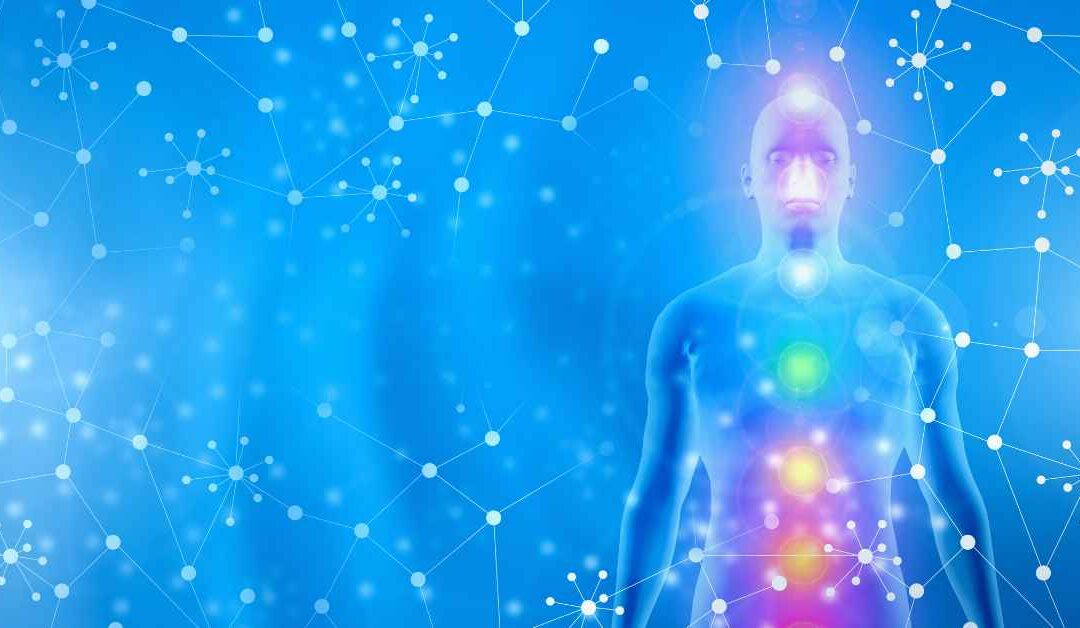Mindfulness, a centuries-old practice rooted in ancient contemplative traditions, has gained significant popularity in modern times for its profound impact on mental and physical well-being. At its core, mindfulness involves being fully present in the moment, cultivating awareness without judgment. As this practice becomes more prevalent, scientific research has delved into the neuroscience behind mindfulness meditation, revealing fascinating insights into how it impacts the brain.
The Brain-Mind Connection: Understanding Consciousness
Before exploring the neuroscience of mindfulness, it is essential to comprehend the relationship between the brain, mind, and consciousness. The brain serves as a remarkable tool that allows consciousness to interact with the external world. We are not only our mind or brain; rather, we are consciousness using the brain as an instrument. This realization empowers us to reprogram our thoughts, emotions, and behaviors, leading to transformative personal growth.
The Neurobiology of Mindfulness
The effects of mindfulness meditation on the brain are rooted in the phenomenon of neuroplasticity. Neuroplasticity refers to the brain’s ability to reorganize itself based on experiences and behaviors, forming new neural connections and pathways. Key brain regions involved in mindfulness include the prefrontal cortex, anterior cingulate cortex, hippocampus, amygdala, and insula.
Prefrontal Cortex: The Executive Control Center
The prefrontal cortex plays a vital role in attention regulation and self-awareness during mindfulness practice. Strengthening this region through mindfulness enhances decision-making and emotional regulation.
Anterior Cingulate Cortex: Emotional Regulation
Mindfulness meditation activates the anterior cingulate cortex, which is involved in processing emotions and fostering empathic responses. This activation leads to improved emotional regulation.
Hippocampus: Learning and Memory
Studies have shown that mindfulness supports the hippocampus, facilitating neurogenesis and enhancing memory consolidation. This brain region’s health is associated with improved cognitive functions and emotional resilience.
Amygdala: Emotion Processing
The amygdala is responsible for processing emotions, particularly fear and stress responses. Mindfulness reduces amygdala activation, leading to a decrease in stress and anxiety.
Insula: Awareness of Physical Sensations
During mindfulness, the insula is activated, heightening our awareness of physical sensations. This heightened awareness contributes to improved pain tolerance and the mind-body connection.
Neuroplasticity: Meditation Effects On The Brain
Mindfulness meditation induces changes in brain structure and function through neuroplasticity. Repeated mindfulness practice increases gray matter density, strengthens white matter connectivity, and enhances neural communication.
Gray Matter Density Changes
Practicing mindfulness leads to increases in gray matter density in brain regions associated with learning, memory, and emotional regulation. These structural changes positively impact cognitive function and emotional well-being.
White Matter Connectivity
Mindfulness meditation improves the connectivity of white matter tracts in the brain, enhancing communication between different brain regions. This improved connectivity supports cognitive flexibility and emotional regulation.
Brainwave Patterns during Mindfulness Meditation
Meditation is associated with distinct brainwave patterns that influence our cognitive and emotional states.
Alpha Waves
Calming and Relaxing
Alpha brainwave patterns dominate during mindfulness meditation, leading to a state of relaxation and reduced stress.
Theta Waves
Deep Meditation and Intuition
During advanced stages of meditation, theta brainwave patterns emerge, associated with deep relaxation, intuition, and creative insights.
Gamma Waves
Heightened Consciousness and Insight
Gamma brainwave patterns are observed during moments of heightened awareness and insight, such as states of flow and peak performance.
Mindfulness Meditation Techniques and Brain Activation
Different meditation techniques elicit specific brain activations and benefits.
Concentration Meditation
Focused Attention and Brain Activity
Concentration meditation involves sustaining attention on a single point of focus, such as the breath. This practice strengthens brain regions responsible for attention and concentration.
Loving-Kindness Meditation
Positive Emotions and Brain Connectivity
Loving-kindness meditation cultivates feelings of compassion and social connectedness, impacting brain regions involved in empathy and positive emotions.
Body Scan Meditation
Mind-Body Connection and Neural Pathways
Body scan meditation enhances body awareness and somatic intelligence, activating brain regions responsible for interoception and bodily perception.
Open Monitoring Meditation
Observing Thoughts and Brain Plasticity
Open monitoring meditation encourages non-reactive awareness of thoughts and emotions, leading to brain changes associated with cognitive flexibility and reduced rumination.
Mindfulness-Based Interventions and Brain Changes
Various mindfulness-based interventions have been developed and studied for their impact on brain function.
Mindfulness-Based Stress Reduction (MBSR)
MBSR is a well-known program designed to reduce stress and enhance well-being. Studies show its effectiveness in reducing stress-related brain activation and improving mood.
Mindfulness-Based Cognitive Therapy (MBCT)
MBCT combines mindfulness with cognitive therapy to prevent relapse in depression and anxiety disorders. It helps modify maladaptive cognitive patterns and emotional reactivity.
The Science of Mindfulness and Mental Health
Mindfulness meditation has shown promising results in various mental health contexts.
Mindfulness for Anxiety and Depression
Research supports the use of mindfulness-based interventions in treating anxiety and depression, showing changes in brain regions associated with emotional regulation.
Mindfulness for PTSD and Trauma Recovery
Mindfulness-based therapies have been effective in trauma recovery, promoting post-traumatic growth and reducing symptoms of post-traumatic stress disorder.
Mindfulness and Emotional Well-Being
Mindfulness positively influences emotional well-being, increasing positive affect and overall life satisfaction.
Integrating Mindfulness into Daily Life
Applying mindfulness in everyday situations can optimize the benefits of meditation on the brain.
Applying Mindfulness in Everyday Situations
Incorporating mindfulness into daily activities and routines enhances present-moment awareness and reduces stress.
Mindful Eating and Brain-Gut Connection
Mindful eating fosters healthy eating behaviors and improves digestive health through mind-body connections.
Mindfulness in Relationships and Social Interactions
Mindfulness improves empathy and communication in relationships, supporting healthy connections.
The Future of Mindfulness Research
Ongoing research in the neuroscience of meditation and mindfulness promises exciting possibilities.
Ongoing Studies and Advancements in Neuroscience
Researchers continue to explore the neuroscience of mindfulness, deepening our understanding of its effects on the brain.
Implications for Personal Growth and Well-Being
Embracing mindfulness fosters personal growth, resilience, and life satisfaction.
Promoting Mindfulness in Education and Healthcare
Integrating mindfulness into education and healthcare settings can have positive outcomes for students and patients.
Exploring the Potential of Technology and Mindfulness
Digital mindfulness tools and applications offer opportunities for wider accessibility and engagement.
Conclusion
Mindfulness meditation offers a fascinating journey into the science of the brain and consciousness. Understanding its neurobiological effects empowers us to embrace mindfulness as a powerful tool for personal growth and well-being. As we integrate mindfulness into our lives, we open doors to a more balanced and fulfilling journey of self-discovery and transformation. Embrace the science of mindfulness and embark on a path of positive change.

Written by Jordan Buchan
Jordan is the founder of Conscious Cues. Her work is centered around the mind-body connection as it is explored through neuroscience, yoga, meditation, and other healing practices.

Energy Medicine: Exploring the Energetic Landscape of Healing
Energy medicine is a fascinating and rapidly evolving branch of alternative healing that delves into the profound role of energy in maintaining our health and well-being. While it may sound esoteric, the principles of energy medicine are firmly grounded in scientific...

The Biofield: The Mind’s Influence on Vital Energy – Bridging Science and Spirituality
The human body is not just a physical entity; it is surrounded and influenced by a subtle and intricate field of energy known as the biofield. This field of vital energy plays a vital role in our health and well-being, extending beyond the physical boundaries and...

The Power of Affirmations: Unleashing the Science of Self-Transformation
In the journey of personal growth and self-discovery, affirmations have emerged as a powerful tool that can shape our thoughts, beliefs, and ultimately, our reality. Affirmations are positive statements that we repeat to ourselves consciously and consistently, aiming...

Inner Child Work 101: Reconnecting with Your Authentic Self
Have you ever felt like there's a part of you that remains hidden, yearning to be heard and acknowledged? Welcome to the world of inner child work - a transformative journey of self-discovery, healing, and growth. By reconnecting with your inner child, you can...

The Benefits of Mindful Movement: Yoga, Tai Chi, and Qi Gong
In today's fast-paced world, the pursuit of mental and physical well-being has become more essential than ever. Mind-body practices that combine mindful movement with focused awareness have garnered increasing attention for their transformative benefits. From ancient...

The Power of Neuroplasticity: Rewiring Your Brain for Conscious Living
In our fast-paced and ever-evolving world, the pursuit of conscious living has become a profound and meaningful endeavor. Essential to this lies the astonishing power of neuroplasticity—the brain's extraordinary ability to adapt, reorganize, and form new neural...

The Transformative Power of an Open Heart: Staying Open to Life
The opening and closing of the heart significantly impacts the level of our energy and the quality of our experiences. When we resist life's challenges, become bothered by external circumstances, or succumb to fear, our heart tends to close, limiting our capacity to...

The Mysteries of Subtle Body Energy: Bridging Ancient Healing Modalities & Quantum Physics
In the realm of ancient healing practices, the concept of subtle body energy has long been regarded as fundamental to health and well-being. Across diverse cultures and traditions, the belief that energy flows within and around us, impacting our physical, emotional,...

The Power of Authentic Relating: A Comprehensive Guide to Genuine Connection
Authentic relating is a transformative practice that invites us to communicate and connect with others from a place of truth, vulnerability, and genuine expression. In a world often filled with superficial interactions, authentic relating offers an opportunity to...

The Power of Non-Violent Communication: A Comprehensive Guide to Cultivating Empathy and Connection
Effective communication serves as the backbone of human relationships, shaping our interactions and conflict resolutions. Non-Violent Communication (NVC), pioneered by Marshall Rosenberg, is a profound approach that goes beyond traditional communication methods....

